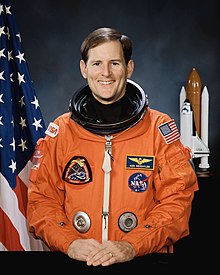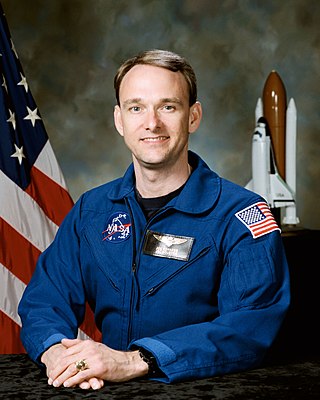
Joe Frank Edwards Jr., , is an American aerospace engineer,former naval officer, aviator, test pilot and NASA astronaut.

Robert Laurel Crippen is an American retired naval officer and aviator, test pilot, aerospace engineer, and retired astronaut. He traveled into space four times: as pilot of STS-1 in April 1981, the first Space Shuttle mission; and as commander of STS-7 in June 1983, STS-41-C in April 1984, and STS-41-G in October 1984. He was also a part of the Manned Orbiting Laboratory (MOL), Skylab Medical Experiment Altitude Test (SMEAT), ASTP support crew member, and the Approach and Landing Tests (ALT) for the Space Shuttle.

Stephen Nathaniel Frick is an American astronaut and a veteran of two Space Shuttle missions. Raised in Pittsburgh, Pennsylvania, Frick graduated from Pine-Richland High School in 1982, earned a degree in aerospace engineering from the United States Naval Academy in 1986, was commissioned as a United States Navy officer, and trained as an F/A-18 fighter pilot. Stationed aboard the carrier USS Saratoga, he flew combat missions during the Gulf War and then earned a master's degree in aeronautical engineering from the Naval Postgraduate School in 1994.

Michael Lloyd Coats is a former NASA astronaut, raised in Riverside, California. From December 2005 to December 2012, he served as Director of the Johnson Space Center in Houston, Texas.

Jon Andrew McBride, is a retired NASA astronaut and American naval officer.

Robert Franklyn "Bob" Overmyer was an American test pilot, naval aviator, aeronautical engineer, physicist, United States Marine Corps officer, and USAF/NASA astronaut. Overmyer was selected by the Air Force as an astronaut for its Manned Orbiting Laboratory in 1966. Upon cancellation of the program in 1969, he became a NASA astronaut and served support crew duties for the Apollo program, Skylab program, and Apollo-Soyuz Test Project. In 1976, he was assigned to the Space Shuttle program and flew as pilot on STS-5 in 1982 and as commander on STS-51-B in 1985. He was selected as a lead investigator into the Space Shuttle Challenger disaster in 1986, retiring from NASA that same year. A decade later, Overmyer died while testing the Cirrus VK-30 homebuilt aircraft.

David Mathieson Walker, , was an American naval officer and aviator, fighter pilot, test pilot, and a former NASA astronaut. He flew aboard four Space Shuttle missions in the 1980s and 1990s.

James Craig Adamson is a former NASA astronaut and retired Colonel of the United States Army. He is married with 3 children. James Adamson flew on two missions, STS-28 and STS-43, and completed 263 orbits and 334 hours in space. After retiring from NASA, he was recruited by Allied Signal where he retired in 2001. Adamson has logged over 3,000 hours in over 30 different types of helicopters and airplanes.

Michael Allen Baker is a retired captain in the United States Navy, former NASA astronaut, and the International Space Station Program Manager for International and Crew Operations, at NASA's Johnson Space Center. He is responsible for the coordination of program operations, integration and flight crew training and support activities with the International Partners.

Daniel Wheeler Bursch is a former NASA astronaut, and Captain of the United States Navy. He had four spaceflights, the first three of which were Space Shuttle missions lasting 10 to 11 days each. His fourth and final spaceflight was a long-duration stay aboard the International Space Station as a crew member of Expedition 4, which lasted from December 2001 to June 2002. This 196-day mission set a new record for the longest duration spaceflight for an American astronaut, a record simultaneously set with his crew mate Carl Walz. Their record has since been broken, and as of 2016 it is held by Scott Kelly, who flew a 340-day mission during Expeditions 43, 44 and 45.

Patrick Graham Forrester is a NASA astronaut, engineer, and former Chief of the Astronaut Office. He is a retired United States Army colonel and Army aviator. He is married and has two children.
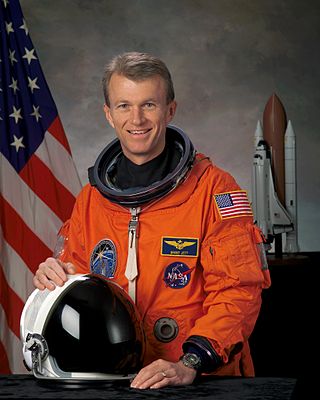
Brent Ward Jett Jr., , is a retired American naval officer and aviator, test pilot, aerospace and aeronautical engineer, and NASA astronaut.
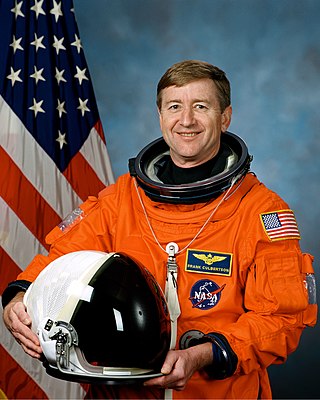
Frank Lee Culbertson Jr. is an American former naval officer and aviator, test pilot, aerospace engineer, NASA astronaut, graduate of the US Naval Academy, and member of the United States Astronaut Hall of Fame. He served as the commander of the International Space Station for almost four months in 2001 and was the only U.S. citizen not on Earth when the September 11 attacks occurred.

Kevin Richard Kregel is an American former astronaut, and former member of the Space Launch Initiative Project at the Lyndon B. Johnson Space Center.

Michael James "Mike" McCulley, , is a retired American naval officer and aviator, test pilot, metallurgical engineer, and former NASA astronaut, and was the first submariner in space. He served as pilot on STS-34 Atlantis mission that among other things deployed the Galileo spacecraft on its journey toward Jupiter.

Stephen Scot Oswald is an American former pilot and NASA astronaut.

Bryan Daniel O'Connor is a retired United States Marine Corps Colonel and former NASA astronaut. He was inducted into the United States Astronaut Hall of Fame in 2008.

Richard Alan "Rick" Searfoss was an American aviator who was United States Air Force colonel, NASA astronaut and test pilot.
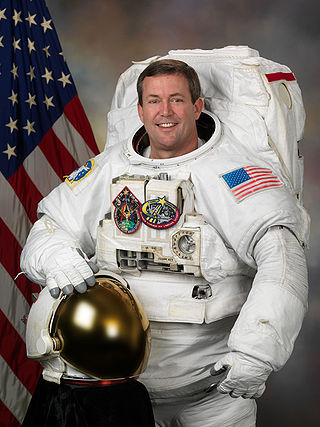
Michael James Foreman is a retired U.S. Navy pilot and a NASA astronaut. While with NASA, Foreman was part of a mission that delivered the Japanese Experiment Module and the Canadian Special Purpose Dexterous Manipulator to the International Space Station. Foreman was also a crewmember of the STS-129 mission in November 2009. In 2018, he was elected mayor of Friendswood, Texas; he was re-elected to a second 3-year term in 2021. He is running unopposed and will serve a third 3-year term beginning in 2024.

Gregory Carl "Ray J" Johnson, , is a retired American naval officer and naval aviator, test pilot, aerospace engineer, and NASA astronaut. He spent his military career in both the regular United States Navy and the Navy Reserve. Johnson was the pilot on Space Shuttle mission STS-125, the final Hubble Space Telescope servicing mission.
